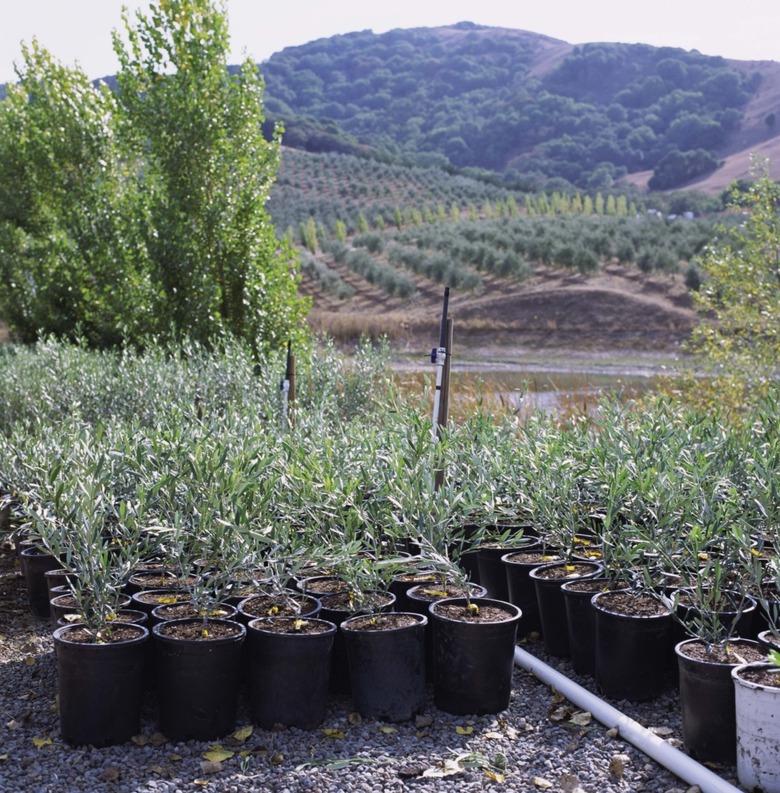Approximately How Long Can An Olive Tree Live?
Olive trees (Olea europaea) are prized for their fruit, which, when pickled in brine, constitutes a delicacy, as well as their picturesquely gnarled branches and gray-green leaves. When you plant one in the garden, you can rest assured that it probably isn't going anywhere.
Olive trees (Olea europaea) are prized for their fruit, which, when pickled in brine, constitutes a delicacy, as well as their picturesquely gnarled branches and gray-green leaves. When you plant one in the garden, you can rest assured that it probably isn't going anywhere. When well cared for, an olive tree can live for hundreds of years, even in a cultivated setting.
Identification
Olives are native to the Mediterranean as well as tropical and subtropical parts of Africa and Asia, where they have been cultivated for thousands of years. Olives were among the first cultivated plants in Western civilization. Now they are grown all over the world, suited to U.S. Department of Agriculture plant hardiness zones 8 through 10. Their grayish foliage is typical of the low-water environment in which they evolved. Fragrant white summer flowers and tasty fall fruits recommend them to commercial growers and home gardeners alike.
- Olive trees (Olea europaea) are prized for their fruit, which, when pickled in brine, constitutes a delicacy, as well as their picturesquely gnarled branches and gray-green leaves.
Lifespan
Olives can be very long-lived trees. As they age, they develop the bent, twisted branches and thick trunks for which they are known. In their home region of the Mediterranean, they are one of the longest-lived plants, and are sometimes reputed to last for a thousand years or more. Specimens exist today that have been pinpointed to at least 700 years of age. When grown under the proper conditions and in the right climate, you can safely expect your olive to live for several hundred years and possibly more.
Climate
Olives prefer a habitat that mimics their environment of origin, with dry summers and cool winters. Olive trees are very sensitive to temperature, going dormant when temperatures drop below 70 degrees Fahrenheit and resuming growth only when temperatures climb once again. They need periods of dormancy in order to grow well, but will be damaged or even die if exposed to temperatures below freezing. If you live in an area that might experience cold snaps of 17 degrees Fahrenheit or lower, do not attempt to grow olives.
- Olives can be very long-lived trees.
- Olive trees are very sensitive to temperature, going dormant when temperatures drop below 70 degrees Fahrenheit and resuming growth only when temperatures climb once again.
Garden Culture
Olives are best grown in fertile soil with consistent moisture. Although they will tolerate drought, they prefer a medium amount of water and porous soil to accommodate good drainage, as they do not appreciate soggy feet. They prefer full sun. Although they do not like cold, if you grow them in an area that does not experience at least two months of sub-50-degree weather, they will not set flowers or fruit.
